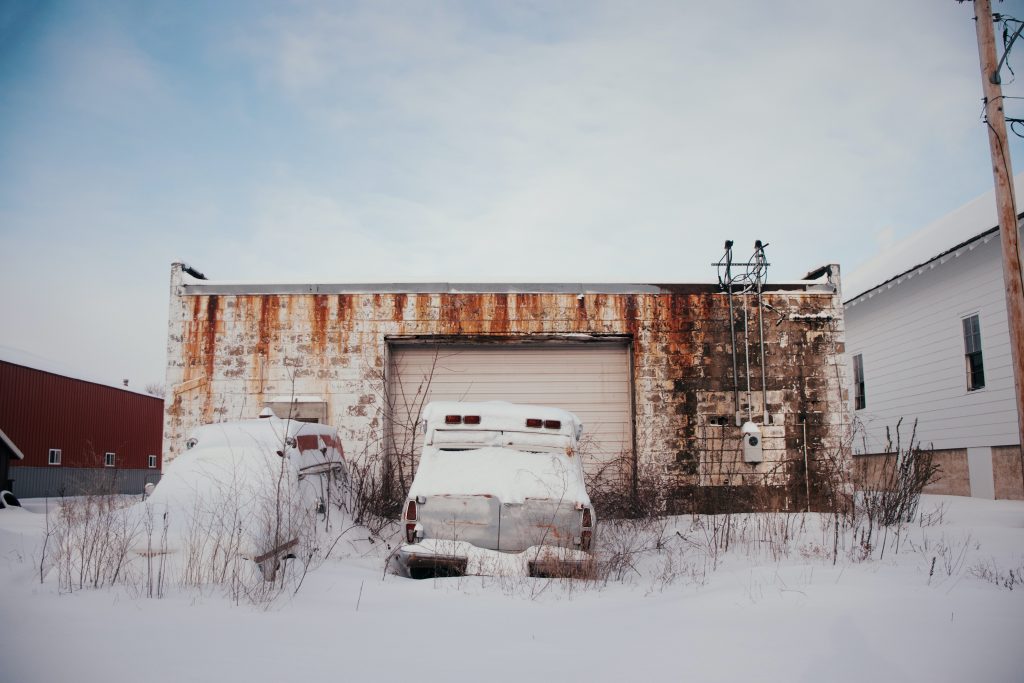How To Store Your Classic Car For Winter
To winterize or to not winterize?
Winterizing is mostly thought of as an “old school” thing nowadays. Depending on the condition of your car and how far you want to go to protect it, is up to you. I always say it’s one of those “better safe than sorry” scenarios especially to prevent rust from building or a varmint chewing up something. Taking time frame into consideration, can help decide how much preparation is needed. For example a 3 month storage isn’t much to be worried about, It’s when you get to the 6 months to even years is when preparation is paramount. In the case of longer time frames the protection against rust, freezing, fuel issues, and overall degradation is protected against.
Rust Protection
Storage area
Rust is not only a consideration of body work, but also other important areas such as the fuel tank and trunk. First and foremost, make sure your storage area is as dry as possible. Not everyone has the ability to have climate controlled storage or even a garage in general, so try to make some layers on the ground to protect against moisture. Especially if parking on dirt or grass, place some plastic layers, cardboard, carpet, plywood, pretty much anything that can act as a barrier is better to park the car on top off.
Combatting rust
Prior to storage give your car a wash and wax, buffing isn’t needed as it’s intended to act as another barrier. Top off the tank, since air carries moisture and removing as much as possible in the tank should prevent rust. Then, adding fuel stabilizer and running the engine to move the stabilizer through the system is a good idea. Be aware that when you run your car, the exhaust can cause condensation and lead to water remaining and causing rust. Prior to storage or anytime you start your car, run it for at least 15 minutes or more to evacuate any moisture. Lastly for storage itself use a car cover and moisture removing products, such as baking soda in areas of the car such as the trunk. Then throw on a car cover for protection, sometimes cars are stored away longer than planned, so it’s always better to be prepared.
Freeze protection and oil
Freezing
Water freezes below 32 Fahrenheit and 0 degrees Celsius and similar to freezing and breaking water pipes the same thing can happen to your engine block. Some say to change your coolant once a year and to flush the system every two years but instead of leaving it up to debate you can use an anti-freeze hydrometer to get an approximation of your coolants effectiveness. Cleaning and flushing your cooling system is a great preventative of freezing prior to storage. If your car is ever going to experience temperatures at negative 30 degree F then draining your system completely for storage is a good idea since anti-freeze begins to solidify. If water does freeze in your engine hopefully the freeze plugs do their job. Freeze plugs are soft metals placed around the engines water jackets and are pushed out from water freezing. This prevents major damage such as an engine cracking but when the water is melted from an engine starting can lead to overheating if gone unnoticed.
Oil
If your car will be sitting for more than a few months it’s a good idea to change your oil prior to storage as well. Used oil can contain contaminants which can lead to damage or sludge. Some say it’s also good to change the oil again in the spring after storage, whether this is necessary or not can be debated. In the end, fresh oil and a filter before storage is a good idea.
Preventatives
Rodents
Add barriers such as plastic bags, aluminum foil, and tape in areas where rodents and bugs could enter like the exhaust and air intake. also placing moth balls, dryer sheets, and mouse traps to make another barrier around the car as well. Cover any gaps you can find to prevent rodents from getting into your car. It may seem obvious but close up any windows as well.
Battery
If you have the ability to hook the battery up to a trickle charger in the car this will keep it from going bad. For shorter term storage disconnecting the terminals can help. For longer storage in areas without electricity, pulling the battery and trickle charging outside the car works too.
Tires
Sitting for extended periods of time can lead to tires flat spotting. For shorter storage adding a few extra pounds of air can help but for longer storage consider placing the car on jack stands.
Parking brake
Consider using wheel chocks when storing, having the parking brake on for extended periods can lead to issues with the brake pads, rotors, or drums having issues like fusing.
Insurance
It may be tempting to cancel your insurance during storage to save some cash but consider your situation before doing so. Collapsing roof from snow buildup, trickle chargers causing fires, and other unexpected scenarios could happen. Weigh the pros/cons and also the potential risks before you cancel your insurance.
